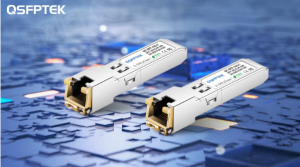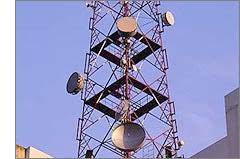How 10GABSE-T Copper Module Works And Why It’s the Future of Wire Transfer Technology
Introduction to 10GASE-T Copper Module
10GBASE-T is a copper wire system that was developed to provide a 10Gbps Ethernet connection over distances of up to 100 meters. This is accomplished by using four twisted pairs of Category 5 cables for the 10Gbps connection.
10GBASE-T can be used in both commercial and residential applications. It is not as popular as the other types of Ethernet cables, but it does have some advantages over them. One advantage is that it can be used on existing Category 5 cable infrastructure without any changes to the cabling system.
10GASE-T Copper Module is the latest technology that can be used for 10GBASE-T networks. It is a copper wire system that provides high-speed data transfer and delivers up to 10 Gbit/s of bandwidth.
10GASE-T Copper Module is a type of network adapter that has been designed to provide high-speed data transfer and deliver up to 10 Gbit/s of bandwidth. 10GASE-T Copper Module has been designed to provide high-speed data transfer and deliver up to 10 Gbit/s of bandwidth.
What are the Benefits of Using 10GABSE-T Copper Module?
Copper wire is the most widely used type of wire. It is also the most affordable and easiest to install. Copper wires are made out of a metal called copper, which is a highly conductive material that can carry electricity for long distances.
The 10GABSE-T module is an economical copper module that provides reliability and performance in harsh environments. It has excellent electrical performance at high temperatures. Copper wire is one of the most common and widely used materials in electrical engineering. It is also one of the most important components in many electrical devices.
There are many benefits that come with using 10GABSE-T Copper Module, such as:
1) The copper wire can be used for a wide range of applications, including power distribution, wiring for homes and buildings, automotive wiring, and more.
2) Copper wires are flexible enough to be bent around corners or under floors without breaking. They are also very durable in comparison to other materials like plastic or steel which can break if they are bent too much.
3) Copper wires have a high thermal conductivity which means they can easily transfer heat from one place to another without needing any additional material like insulation or air space between

The Difference Between Coax Cable And Twisted Pair Cable
Coaxial cables are used for long-distance transmissions and are more robust than twisted-pair cables. Twisted pair cables are used in short-distance transmissions, such as phone lines, and are more susceptible to noise.
Coaxial cables have a larger bandwidth than twisted-pair cables. This means that coaxial cable can carry more data at a time than twisted pair cable. Coaxial cable also has a higher resistance to electromagnetic interference than twisted pair cable.
Twisted pair cables have the ability to transmit data at high speeds but do not have the bandwidth that coaxial cable does.
Coaxial cables are more expensive to install and less reliable than twisted-pair cables, but they can transmit data over longer distances without any problems. Twisted pair cables are much cheaper to install and more reliable than coaxial cables, but they can only transmit data over shorter distances.
Conclusion
This article describes 10GBASE-T and the 10GBASE-T infrastructure that goes with it. 10GBASE-T’s biggest advantage is the ability to upgrade existing equipment to 10G Ethernet at a minimal cost. If you would like to learn more about 10GBASE-T copper modules, please contact QSFPTEK via sales@qsfptek.com. QSFPTEK offers a wide range of high-quality, low-cost 10G optical modules including 10GBASE-T, and 10GBASE-SR.




